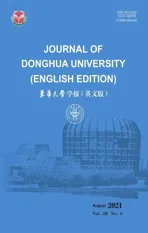Influence Mechanism of Clothing Anchor Features on Consumers’ Purchase Intention
2021-10-22CHENXiaona陈晓娜LIUJing
CHEN Xiaona(陈晓娜), LIU Jing(刘 晶)
College of Textile and Clothing, Qingdao University, Qingdao 266071, China
Abstract: Relying on the field of e-commerce live broadcast, the features of clothing anchors are divided into four dimensions: charm features, recommendation features, display features and interaction features. The intermediate variable of social presence is introduced to construct a theoretical model of e-commerce live broadcast consumers’ purchase intention. Based on the questionnaire survey data collection, using SPSS 23.0 software and Amos 23.0 software to analyze the data, it is concluded that the features of charm, recommendation, display and interaction of the clothing anchors have a significant positive impact on consumers’ purchase intentions. Social presence plays a mediating role in the influence of the features of charm, recommendation, display and interaction on consumer’ purchase intention.
Key words: e-commerce live broadcast; social presence; anchor feature; Stimulus-Organism-Response (SOR) model theory; purchase intention
Introduction
In 2019, the new format of live e-commerce has grown rapidly. More than 10 million businesses opened live broadcast during the Tmall’s double 11, and 50% of them had gain new growth through live broadcast[1]. The Xueli team, which mainly focused on clothing live broadcast, had a total sales volume of more than 2.5 billion yuan in Tmall’s double 11 live broadcast, and the cumulative sales of Suning.com 11-10 super buyer’s live studio exceeded 100 million yuan[2]. All major e-commerce platforms are actively promoting the live broadcasting field. E-commerce live broadcast marketing sells clothing products by means of instant communication and real-time introduction, which makes up for the limitation of communication between sellers and consumers. Consumers can rely on live broadcast to have a comprehensive and intuitive understanding of the clothes they buy. Unlike Weibo, WeChat and other social media, live broadcast has some unique characteristics, such as simultaneity and authenticity[3]. However, due to the existence of virtual shopping environment in the live broadcast room, customers’ browsing experience of goods would be weakened[4]. Customers’ understanding of the products is only limited to the explanation and description of the anchor, and the anchor’s explanation affects consumers’ understanding of products. As a product recommendation officer and experiencer, the anchor plays an important role in the promotion of brand products. Therefore, understanding the ability and characteristics of clothing anchor in product introduction and studying the influence of the characteristics on consumers’ purchase intention are helpful to the cultivation direction of the anchor and the live broadcast marketing strategy.
In the research of online shopping, it was pointed out that the visibility and interactivity of information presentation form and the factuality and evaluation of information presentation content could cause consumers’ social presence, and the perception of social presence atmosphere could positively promote consumers’ online purchase behavior[5]. Chenetal.[6]analyzed the impact of consumer-seller-website interaction on customer trust from the perspective of interaction, and believed that social presence played a mediating role. Liuetal.[7]explored the impact of social presence on the adoption intention of live broadcast users from the perspective of pleasure. The results show that visual scene and communication function have positive effect on social presence, social presence has positive effect on perceived enjoyment, and perceived enjoyment positively affects users’ adoption intention. It can be seen that social presence will influence consumers’ purchase behavior in online shopping environment. In the study of live shopping behavior, Liuetal.[8]discussed the effects of interactivity, authenticity, entertainment and visibility on customer emotion. Feng and Lu[9]concluded that social presence had a positive impact on impulse buying intention in live broadcast marketing. However, there have few studies on the live broadcast characteristics that can touch social presence. The antecedent variable that affect consumers’ social presence still need to be explored.
This paper took the consumers with watching experience of clothing e-commerce as the research object, and analyzed the features of e-commerce anchors that affected the purchase intention of clothing consumers. Based on the Stimulus-Organism-Response (SOR) theory, this paper introduced the social presence as an intermediary variable, and constructed a theoretical model between the features of clothing anchor and consumers’ purchase intention. Through the empirical analysis of market research data, the internal influence mechanism among anchor characteristics, consumers’ social presence and purchase intention were obtained. It has practical value for improving the quality of live broadcast and the interactive mode of anchor, and enhancing the purchase intention of clothing consumers under the mode of e-commerce live broadcast.
1 Theoretical Basis
The SOR model was first proposed by Mehrabian and Russell in 1974[10]. According to the model, a person’s internal emotional state and cognition of external things will change after receiving information stimulation from the external environment, thereby affecting the behavior and response[11]. Researchers usually use this model to study the relationship between the individual behavior and the internal state. Erogluetal.[12]explored the influence of online store atmosphere cues on consumers’ personal feelings and cognition in 2001. They found that the stimulus factors in the online store atmosphere were embodied in all external perceptions of consumers, emotional reactions caused by shopping tasks or consumer social relations, and the organism was a series of thinking transformation processes of consumes after stimulation reception, response referred to consumers’ purchase decisions of approaching or avoiding. Nawietal.[13]examined the effect of selected antecedents and risk factors on online purchase behaviour in Malaysia under the premise of an adapted SOR model. The findings revealed that the age of consumers, as well as perceived after-sales risk, financial risk, psychological risk, and social risk, had a significant effect on the online purchase behaviour in Malaysia. Zhuetal.[14]investigated (people who dedicate their time in sharing and developing consumer content through social media) online consumer repurchase intention in Thai context based on SOR model. Qu and Wang[15]also used SOR model to explore the impact of return policy on online shopping behavior of clothing consumers. In summary, the SOR model theory has been applied as a basic theory in online shopping, and scholars have generally confirmed the usefulness of the theory of SOR model. Therefore, this paper used SOR model as the theoretical basis for research hypothesis, defined the clothing anchor as the main stimulus source, and explored the mechanism of different features of clothing anchor on consumers’ purchase intention, as well as the intermediary role of consumers’ social presence as the organism.
2 Theoretical Hypothesis and Model
Construction
2.1 Theoretical hypothesis
2.1.1Relationshipbetweenfeaturesofclothinganchorandconsumers’purchaseintention
Clothing anchor is an online sales group that introduces and recommends products to consumers by explaining and trying on the live broadcast platform[16]. Anchors can show consumers real-time product details with the help of the visualization and synchronization of the platform, and answer consumers’ questions about the product in combination with bullet-screen interaction[17]. As an important opinion leader in the live broadcast room, the anchor’s words and deeds can affect consumers’ cognition of the product. Han and Xu[18]used grounded theory to define the attributes of anchor, including charm, recommendation, display and interaction, and proved that the attributes of anchor affect consumers’ online purchase intention through consumers’ internal state indirectly. Different from general commodities, clothing products effect needs to be displayed from all aspects and angles, which requires clothing anchors to have good shape and appearance. Anchors who meet consumers’ aesthetic requirements or are similar to consumers’ bodies tend to create better effects[19]. Professional recommendation and novel clothing display are also the key to enhance consumer trust. The anchor’s detailed explanation of the product and sharing of the use experience can affect the consumer perception of the product value, and then affect the consumer behavior. The experiential clothing display makes the material, layout, performance and other elements of the clothing fully displayed[20]. In addition to the above elements, interactivity is also one of the important features of live broadcast. The sincere interaction between anchors and consumers can enhance the consumer dependence. The formation of e-commerce live interactive activities and the establishment of long-term emotional communication can also make consumers watch the e-commerce live platform coherently[21]. Relevant studies also show that the real-time interaction between anchors and consumers can meet consumers’ entertainment needs and enhance their perception of entertainment value[22]. The interaction related to product function also positively promotes consumer perceived functional value[23]. Based on this, this paper defines the features of the clothing anchor as charm features, recommendation features, display features and interaction features, and assumes as follows.
Hypothesis 1(H1): charm features have a significant positive impact on consumers’ purchase intention.
Hypothesis 2(H2): recommendation features have a significant positive impact on consumers’ purchase intention.
Hypothesis 3(H3): display features have a significant positive impact on consumers’ purchase intention.
Hypothesis 4(H4): interaction features have a significant positive impact on consumers’ purchase intention.
2.1.2Mediatingroleofsocialpresence
The presence in the field of e-commerce refers to the real shopping experience created for consumers in the online virtual shopping environment by relying on advanced technologies and marketing methods[24]. This sense of social interaction and warmth perceived in the media environment is called social presence[25]. Bulu[26]divided telepresence into three dimensions: common telepresence, location telepresence and social telepresence. Through empirical analyses, it is concluded that social telepresence has the greatest impact on consumer satisfaction. Chenetal.[6]divided the presence in live shopping mode into two dimensions: spatial presence and social presence, and believed that the construction of customers’ social telepresence could be achieved through the establishment of interaction between customers and businesses. In live interaction, the behavior of the anchor can affect the social presence of consumers[27]. The enhancement of social presence can improve the consumer identity, and then have a positive impact on purchase intention[28]. The reality and interactivity of anchor product recommendation affect customers’ emotional social presence[29]. Based on the above, this paper makes assumptions about the relationship among social presence, clothing anchor features and consumers’ purchase intention.
Hypothesis 5(H5): social presence plays a mediating role between charm features and clothing consumers’ purchase intention.
Hypothesis 6(H6): social presence plays a mediating role between recommendation features and clothing consumers’ purchase intention.
Hypothesis 7(H7): social presence plays a mediating role between display features and clothing consumers’ purchase intention.
Hypothesis 8(H8): social presence plays a mediating role between interaction features and clothing consumers’ purchase intention.
2.2 Model construction
Based on the above contents, this paper constructs the purchase intention model of e-commerce live broadcast clothing consumers, and the research model is shown in Fig. 1.
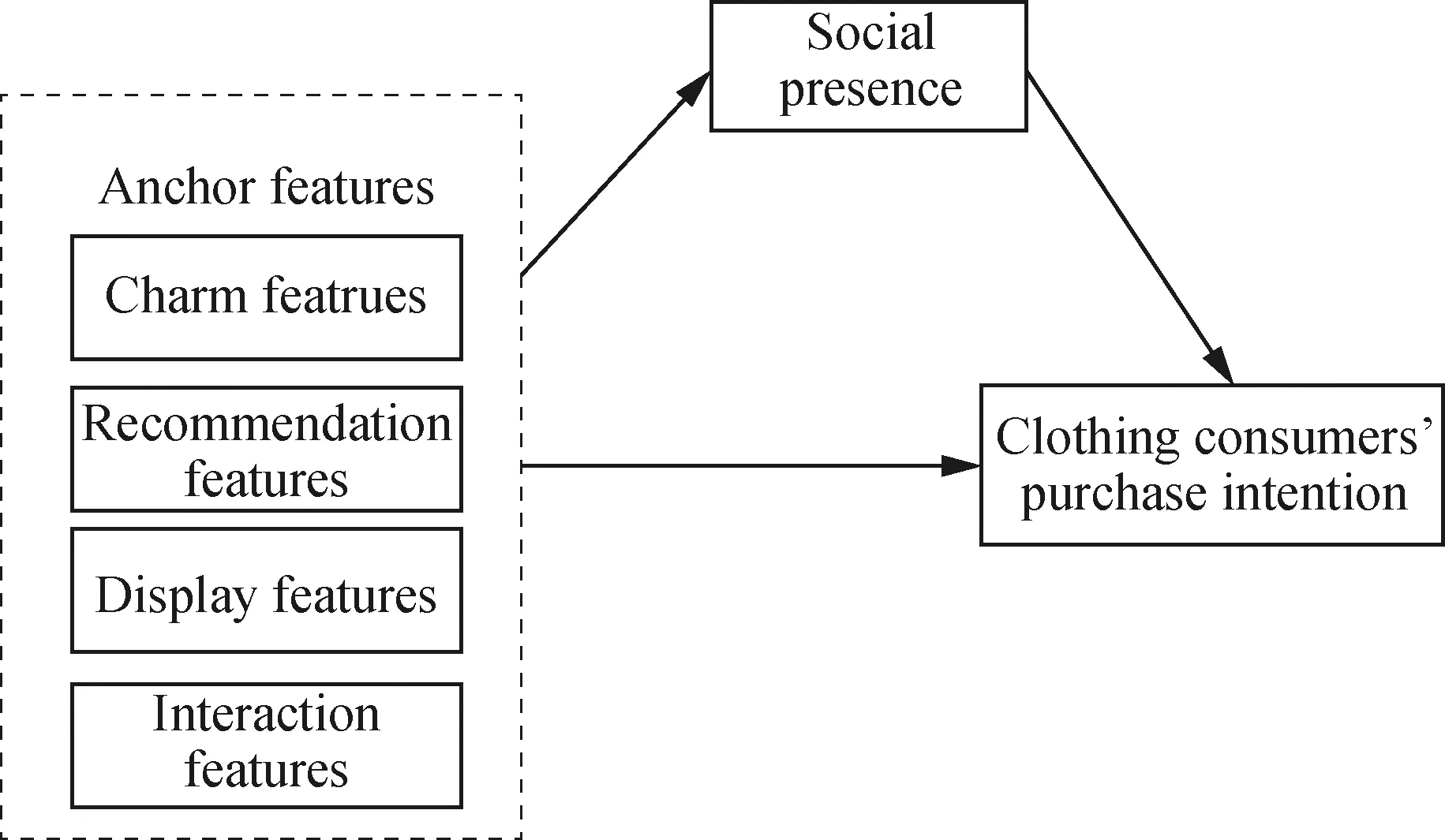
Fig. 1 Consumers’ purchase intention model of e-commerce live broadcast platform
3 Research Design and Model Test
Results
3.1 Variable design and reference sources
The core variables of this study include charm features, recommendation features, display features, interaction features, social presence and purchase intention. Among them, the scale of anchor features refers to the research contents of Han and Xu[18]and Liuetal.[30]. The scale of social presence refers to the papers of Gong[27]and Zhaoetal.[31]. The scale of purchase intention refers to the paper of Zhouetal.[29]. In order to ensure the overall reliability and validity of the scale, the measurement scales of this study are based on previous research contents, and combined with the background of e-commerce live broadcast to modify the problems. The measurement items are shown in Table 1.

Table 1 Measurement items about research variables

(Table 1 continued)
3.2 Questionnaire measurement and sample data collection
According to the iiMedia research, 64.4% of online shoppers are under the age of 30[32]. And students account for the largest proportion of netizens in China, up to 23.7%[33]. It shows that young people are more likely to accept new things. The interactivity and interestingness of e-commerce live broadcast can meet their different consumption needs. Therefore, this paper takes young people who understand e-commerce live broadcast as research objects. Through online and offline questionnaire distribution modes, a total of 270 samples with clothing category e-commerce live broadcast viewing experience were collected. And it remained 266 effective samples after eliminating the invalid answer with completely consistent options, the effective rate was 98.5%. For the measurement of the questionnaire items are used 5-point Likert scale. 1 means totally disagree, 2 means relatively disagree, 3 means generally, 4 means relatively agree, 5 means completely agree.
3.3 Descriptive statistics
In this survey, the majority of respondents with clothing category e-commerce live watching experience are girls, accounting for 77.8%. The proportion of people aged 19-24 is 66.5%, and that of people aged 25-30 is 28.6%, indicating that e-commerce live broadcast is indeed popular among young consumers. Most of them are undergraduates and postgraduates, accounting for 45.5% and 51.5%, respectively. Most of the occupations are students, accounting for 74.4%. Respondents with a monthly income of 0-2 000 Yuan account for 68.8%, and 12.4% had a monthly income of 200 1-4 000 Yuan. The rest of the respondents’ income is more than 4 000 Yuan. In terms of live shopping, 75.2% of respondents had a monthly consumption of less than 500 Yuan, and 16.5% of respondents between 501-1 000 Yuan. The above data all show that the research object belongs to the group of young people with high academic qualifications. They have a certain understanding of e-commerce live broadcast and have watched live broadcast of clothing commodities. The overall samples meet the expectations of the research and can be further analyzed.
3.4 Reliability analysis
The reliability test of each dimension of the scale data showed that the Cronbach’αof clothing anchor features, social presence and purchase intention were greater than 0.800, and the Cronbach’αof the overall scale was 0.934. That is to say, the data obtained from this survey has good internal consistency, and the reliability test results are good.
3.5 Validity test
SPSS 23.0 software was used for exploratory factor analysis. The results showed that Kaiser-Meyer-Olkin(KMO) was 0.919. Bartlett sphericity test significance was 0.000, indicating that the data were suitable for factor analysis. The variables and factor loads measured by principal component analysis are shown in Table 2, and the results show that the factor loads of each variable are greater than 0.500, which indicates that the exploratory factor analysis results of the scale are good and can be further verified.

Table 2 Results of exploratory factor analysis
Amos 23.0 software was used for confirmatory factor analysis to verify the overall validity of the scale from three aspects: structural validity, convergent validity and discriminant validity. Firstly, the fitting degree of the data was tested. The test results are as follows: Chi-square/degree of freedom (χ2/DF) value is 2.398(<5); The root mean square error of approximation(RMSEA) value is 0.073(<0.080). Goodness of fit index (GFI) is 0.896 (>0.800); norm fitting index(NFI) is 0.912(>0.800); comparative fit index(CFI) is 0.946(>0.800); incremental fit index(IFI) is 0.947(>0.800); Tucker-Lewis index(TLI) is 0.931(>0.800). All indicators meet the minimum adaptation standard, the model fit well, and the scale structure validity is good.
Secondly, the convergence validity of the scale data was tested, and the results are shown in Table 3. The factor loads of the observation variables corresponding to charm features, recommendation features, display features, interaction features, social presence and purchase intention are greater than 0.5, which indicates that the measurement items of the latent variables are representative. In addition, the value of average variance extraction(AVE) of each latent variable is greater than 0.5, and the value of combined reliability(CR) is greater than 0.8. In conclusion, the scale has good convergence validity.
Finally, the discriminant validity of the scale data was tested. The results are shown in Table 4. Among them, the values at the diagonal of the table are AVE, and the values in the lower left triangle area are the correlation coefficients among the latent variables. The data show that there is a significant correlation between the latent variables (P<0.001), and they are all less than the corresponding square root of AVE. It shows that although there is a correlation between the latent variables, the correlation is low, which is not higher than the correlation between the observed variables, and there is a certain distinction between them. In conclusion, the discriminant validity of the scale is ideal.
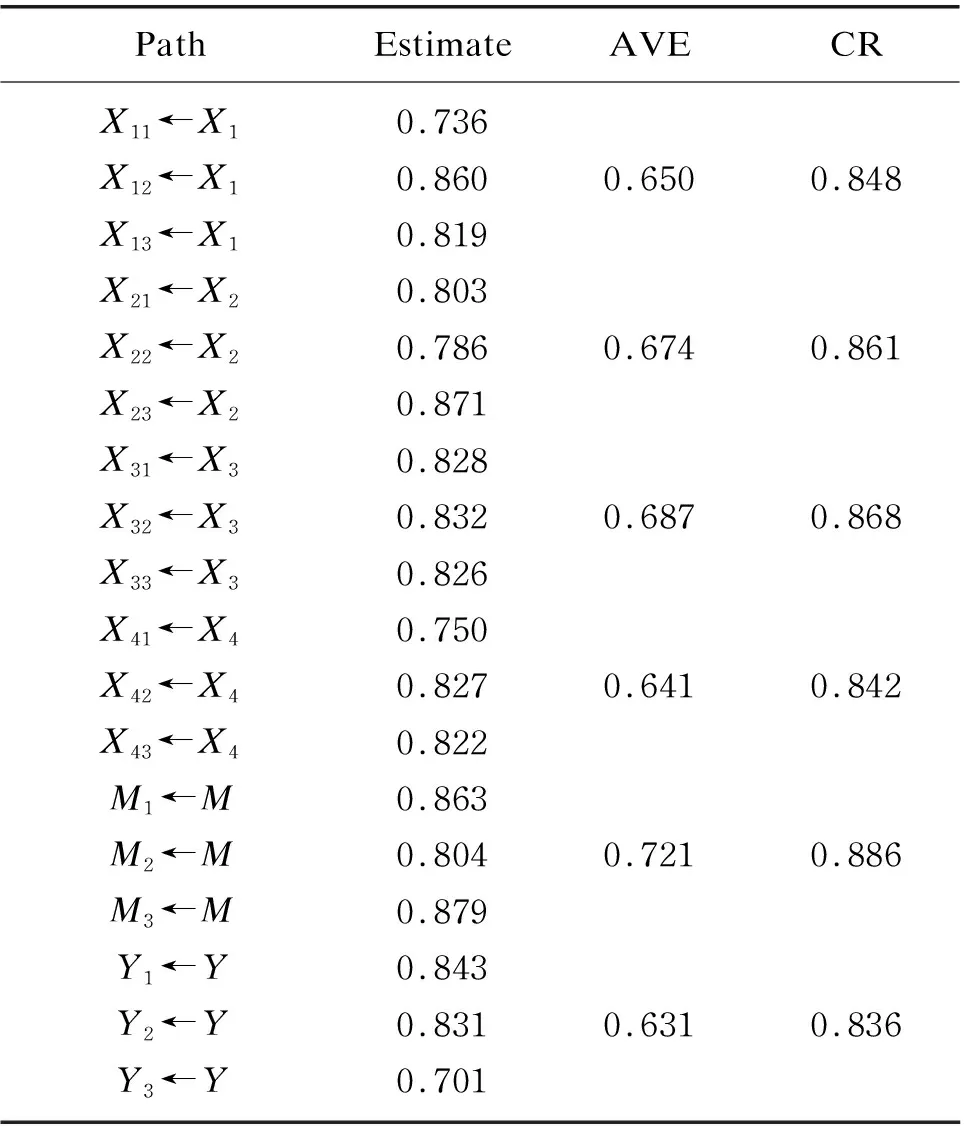
Table 3 Convergence validity test

Table 4 Discrimination validity test
4 Analysis of Empirical Research Results
4.1 Test on the relationship between features of clothing anchor and consumers’ purchase intention
Process, a general computing tool for SPSS macro modeling compiled by Hayes[34], was used for data analysis, and model 4 is set as the intermediary model. After controlling for gender, age, education background and monthly income, this paper tests the mediating effect between social presence and consumer purchase behavior. Firstly, the regression results of anchor features and consumers’ purchase intention are shown in Table 5. Models 1-4 verify the influence of each dimension of anchor features on purchase intention respectively. The results show that charm features have a significant positive impact on consumers’ purchase intention (β=0.467,P<0.001); recommendation features have a significant positive impact on consumers’ purchase intention (β=0.549,P<0.001), display features have a significant positive impact on consumers’ purchase intention (β=0.558,P<0.001), and interaction features have a significant positive impact on consumers’ purchase intention (β=0.540,P<0.001). Therefore, H1, H2, H3 and H4 are verified. The influence degree of each dimension on purchase intention is: display features are the highest; charm features are the lowest; recommendation features and interaction features are in the medium level, and the former is higher than the latter.
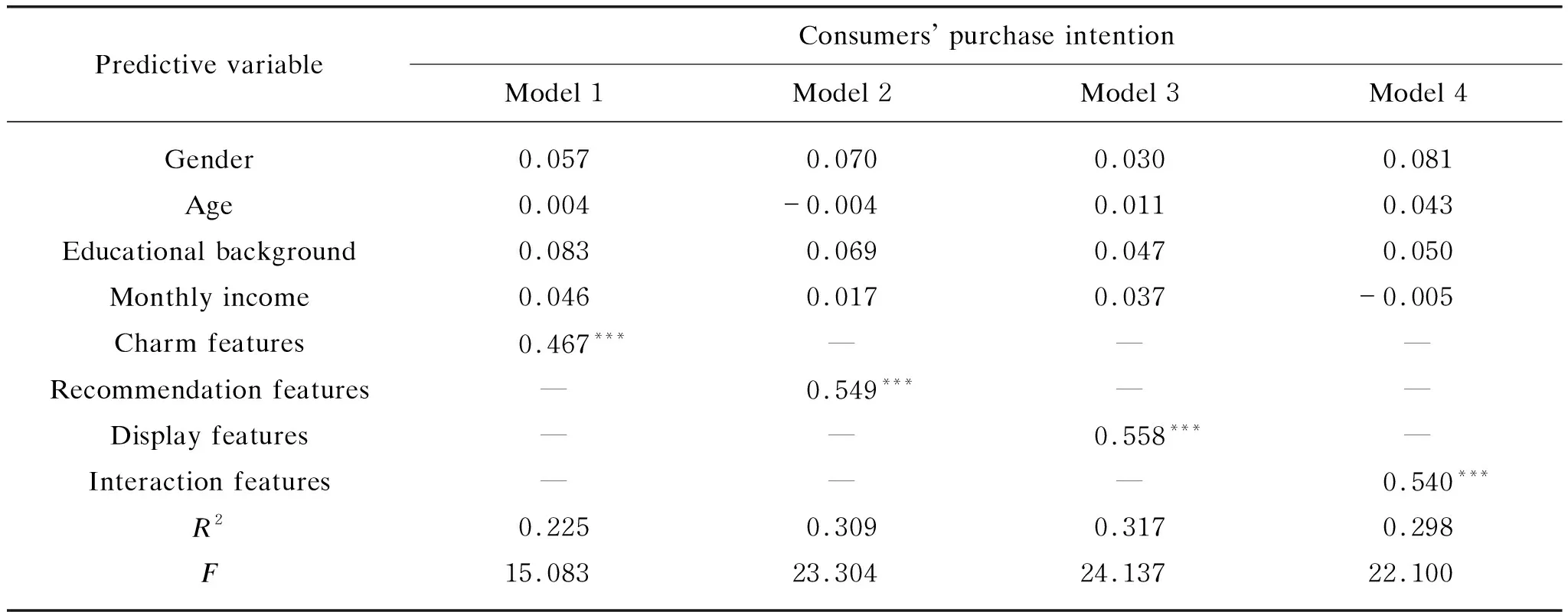
Table 5 Regression analysis of anchor features and consumers’ purchase intention
4.2 Mediating effect test of social presence
The mediating effect of social presence is shown in Table 6. It can be see from models 5-8 that the regression coefficients of the charm features, recommendation features, display features, interaction features and social presence of clothing anchor are significant at the level ofP<0.001, and theβvalues are 0.441, 0.494, 0.426 and 0.494 respectively, which indicates that the four dimensions of anchor features have a significant positive impact on social presence. After adding mediating variable social presence (models 9-12), the influence of independent variables charm features, recommendation features, display features and interaction features on consumers’ purchase intention are still significant at the level ofP<0.001, but the regression coefficient decreased (0.311<0.467, 0.406<0.549, 0.425<0.558, 0.393<0.540).
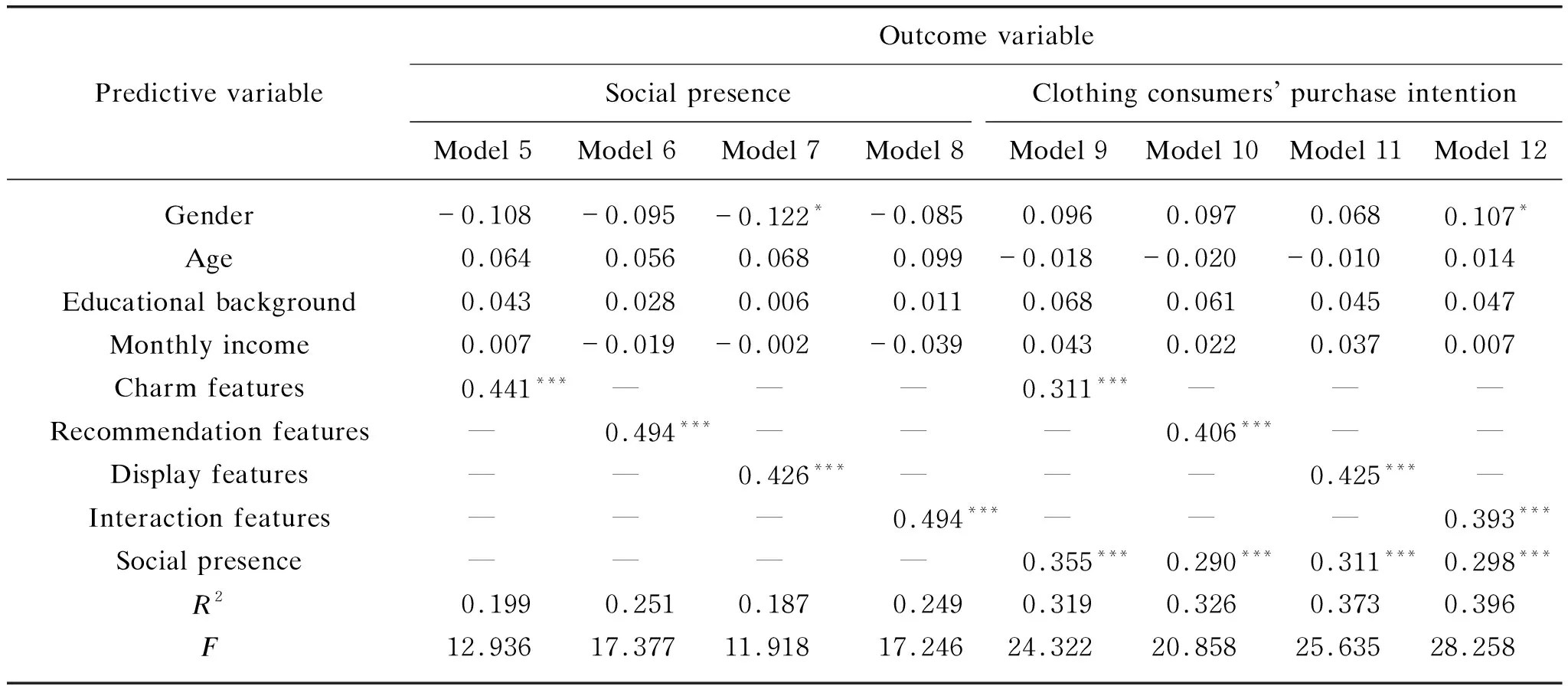
Table 6 Mediating effect test of social presence
In addition, the upper and lower limits of the direct effect of each dimension of anchor features on consumers’ purchase intention and the mediating effect of social presence do not include 0, which are in the bootstrap 95% confidence interval (shown in Table 7). It shows that the dimensions of anchor features not only directly affect the purchase intention, but indirectly affect the purchase intention through the mediating role of social presence. The mediating effects of social presence in the influence of charm features, recommendation features, display features and interaction features on consumers’ purchase intention are 33.41%, 26.04%, 23.74% and 27.24%. In conclusion, assuming that H5, H6, H7 and H8 are established, charm features, recommendation features, display features and interaction features have an impact on consumers’ purchase intention through the mediating effect of social presence.
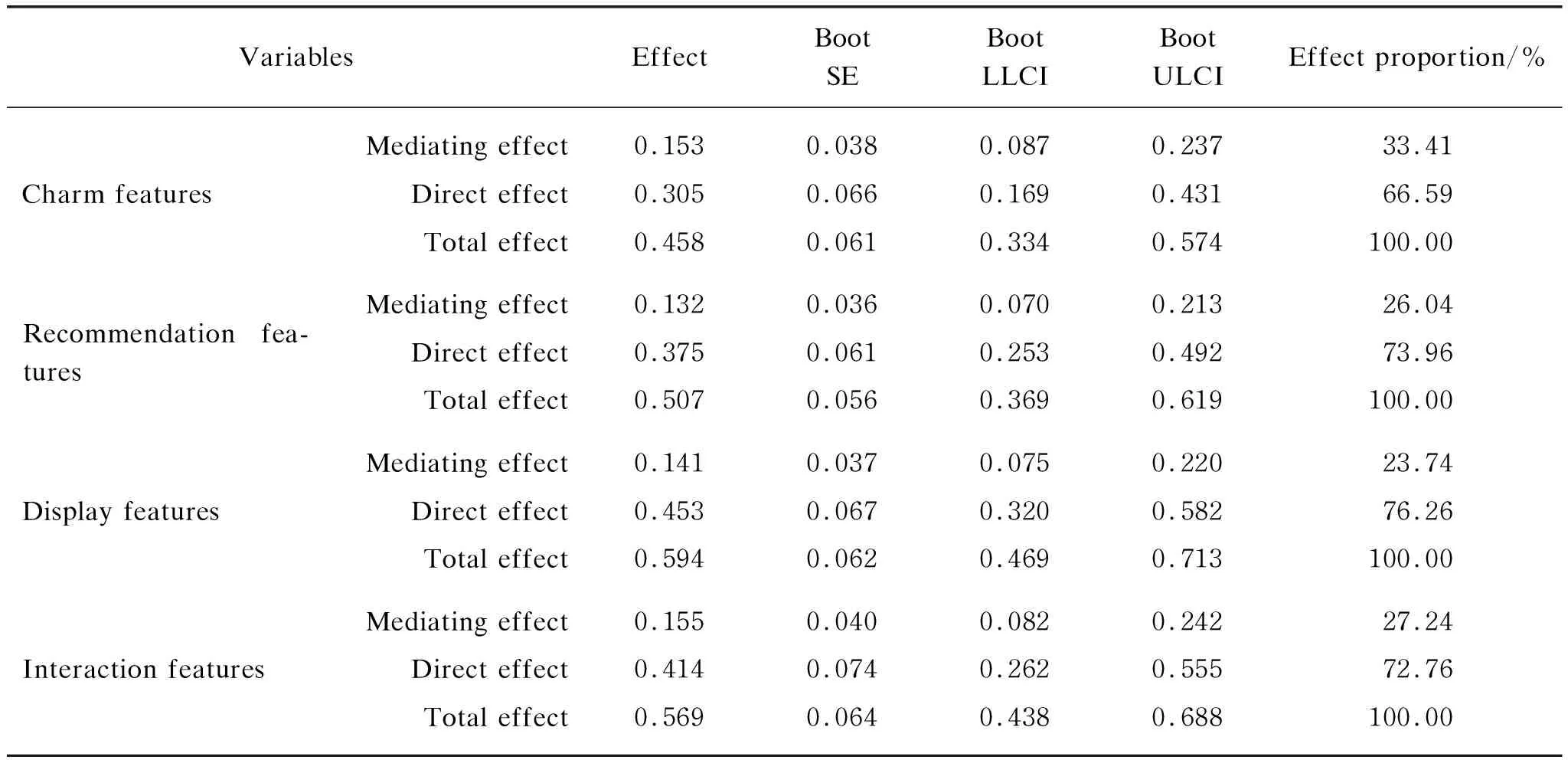
Table 7 Effect and proportion of anchor features on purchase intention
5 Conclusions and Suggestions
5.1 Research conclusions
Based on the perspective of presence, this paper establishes a theoretical model of “anchor features-social presence-purchase intention” in the field of clothing live broadcast, focusing on the anchor features factors and their mechanism that affect the consumption intention of clothing live broadcast. The conclusions are as follows.
(1) The charm features, recommendation features, display features and interaction features of clothing anchors have a significant positive impact on consumers’ purchase intention. The degree of influence is: display features are the highest; charm characteristics are the lowest; recommendation features and interaction features are in the medium level, and the former is higher than the latter.
(2) Social presence has a mediating effect in the influence of clothing anchor features on consumers’ purchase intention. That is to say, the features of charm, recommendation, display and interaction of anchors have an impact on the purchase intention of clothing consumers through the intermediary role of social presence, and the intermediary effect accounts for 33.41%, 26.04%,23.74% and 27.24%, respectively.
5.2 Marketing suggestions
In the features of e-commerce anchors, the personal charm of anchors, the ability to recommend products, the way to display products and the interaction with consumers can all affect consumers’ purchase intention. And the above abilities can enhance the social presence of consumers when them watching live broadcasts. Therefore, in terms of the personal charm of e-commerce anchors, they should enhance the affinity of language expression or display a humorous introduction style, which can eliminate the sense of distance generated by the mobile phone screen. When recommending products, anchors should use professional language, and develop new ways to display clothing products, so that consumers can have a comprehensive and intuitive understanding of the information and functions of clothing products. During the interaction, anchors should master the rhythm of interaction, combine explanations and interactions, and answer consumers’ questions clearly and accurately, so that consumers can also feel the sense of social interaction during live shopping. Only by enhancing consumers’ social presence and stimulating consumers’ intimacy with products and businesses can enhance consumers’ purchase intention.
杂志排行
Journal of Donghua University(English Edition)的其它文章
- Performance Evaluation of a Molten Carbonate Fuel Cell-Graphene Thermionic Converter-Thermally Regenerative Electrochemical Cycles Hybrid System
- Long Text Classification Algorithm Using a Hybrid Model of Bidirectional Encoder Representation from Transformers-Hierarchical Attention Networks-Dilated Convolutions Network
- Estimating Mechanical Vibration Period Using Smartphones
- Meta-Path-Based Deep Representation Learning for Personalized Point of Interest Recommendation
- Design and Characterization of Electrical Connections for Conductive Yarns
- Influence of Fe2O3 on Release Mechanism of NH3 and Other Nitrogen-Containing Compounds from Pyrolysis of Three Typical Amino Acids in Urban Sludge
